
The Melanoplinae are a subfamily of grasshoppers in the family Acrididae. They are distributed across the Holarctic and Neotropical realms. They are one of the two largest subfamilies in the Acrididae. As of 2001 the Melanoplinae contained over 800 species in over 100 genera, with more species being described continuously.
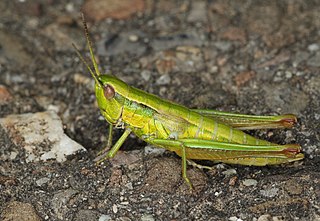
Gomphocerinae, sometimes called "slant-faced grasshoppers", are a subfamily of grasshoppers found on every continent but Antarctica and Australia.

The Tanaoceridae are an insect family in the monotypic superfamily Tanaoceroidea in the suborder Caelifera. They are sometimes called desert long-horned grasshoppers.

Romaleinae is a subfamily of lubber grasshoppers in the family Romaleidae, found in North and South America. More than 60 genera and 260 described species are placed in the Romaleinae.

Rhammatocerus is a genus of grasshoppers in the subfamily Gomphocerinae and the tribe Scyllinini. There are about 16 described species in Rhammatocerus, including R. schistocercoides, the "Mato Grosso locust".
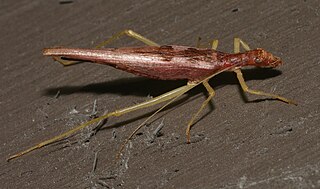
Neoxabea is a genus of smooth-legged tree crickets in the family Gryllidae. There are about 14 described species in Neoxabea.

Stenacris is a genus of spur-throat toothpick grasshoppers in the family Acrididae. There are about six described species in Stenacris.
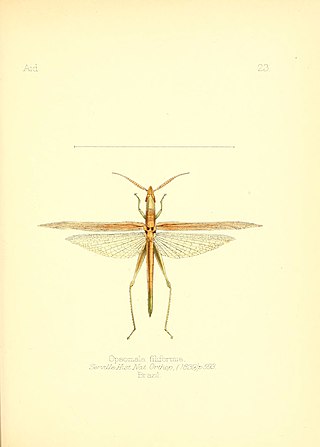
Leptysminae is a subfamily of spur-throat toothpick grasshoppers in the family Acrididae. There are at least 20 genera in Leptysminae, found in North, Central, and South America.
Tanaocerus is a genus of desert long-horned grasshoppers in the family Tanaoceridae. There are at least two described species in Tanaocerus.

Amblytropidia is a genus of slant-faced grasshoppers in the family Acrididae. There are about 14 described species in Amblytropidia.

Brachystola is a genus of grassland lubber grasshoppers in the family Romaleidae, found in the United States and Mexico. They are among the largest grasshoppers found in North America. The species Brachystola magna happens to have large and easily visible meiotic chromosomes, and was used in early genetic studies.
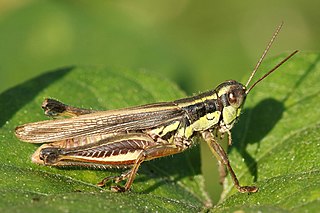
Dichroplus is a genus of spur-throated grasshoppers in the family Acrididae. There are more than 20 described species in Dichroplus, found in North, Central, and South America.

Ommatolampis is a genus of short-horned grasshoppers in the family Acrididae. There are at least four described species in Ommatolampis, found in South America.
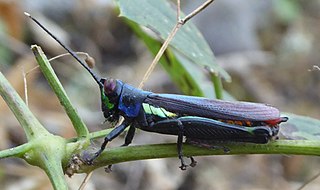
Proctolabus is a genus of short-horned grasshoppers in the family Acrididae. There are about eight described species in Proctolabus, found in Mexico and the southwestern United States.

Stenopola is a genus of spur-throat toothpick grasshoppers in the family Acrididae. There are about 13 described species in Stenopola, found in the Americas.

Stenopola puncticeps is a species of spur-throat toothpick grasshopper in the family Acrididae. It is found in Central and South America.

Leptysma is a genus of spur-throat toothpick grasshoppers in the family Acrididae. There are about five described species in Leptysma.

Cornops is a genus of spur-throat toothpick grasshoppers in the family Acrididae. There are about six described species in Cornops.

The Ommatolampidinae are a subfamily of grasshoppers in the family Acrididae, found in central and South America, and based on the type genus Ommatolampis. Derived from the "Ommatolampides" used by Brunner von Wattenwyl in 1893, the first use of the name in its current form was by Rodríguez et al. in 2013; this taxon appears to be paraphyletic.















